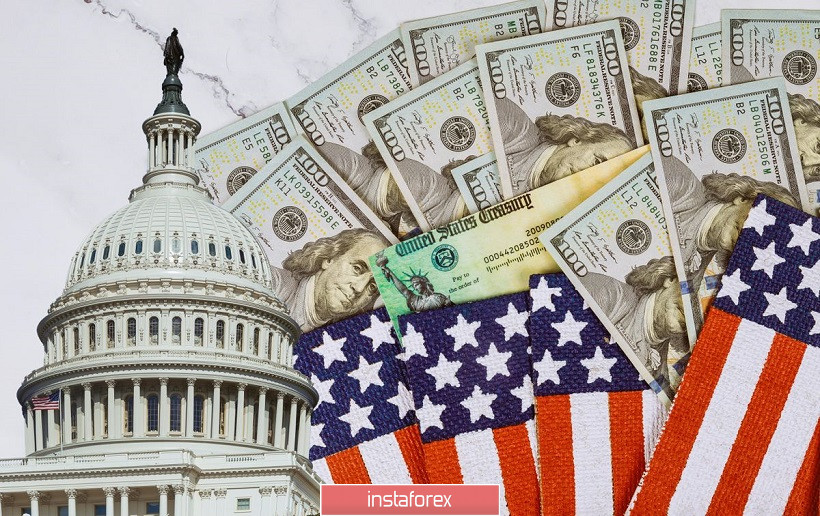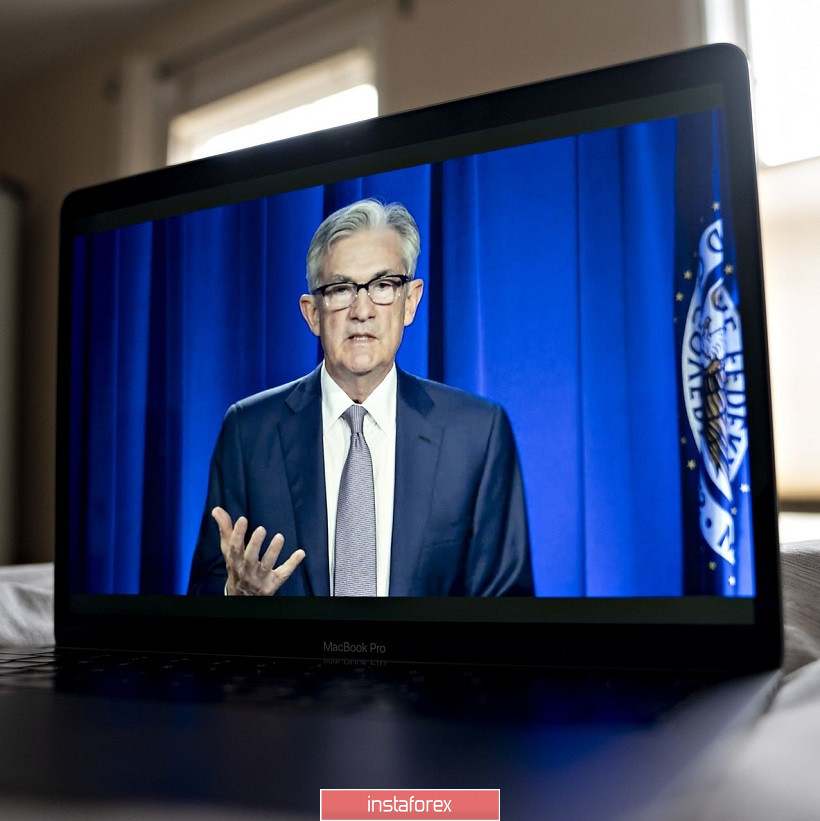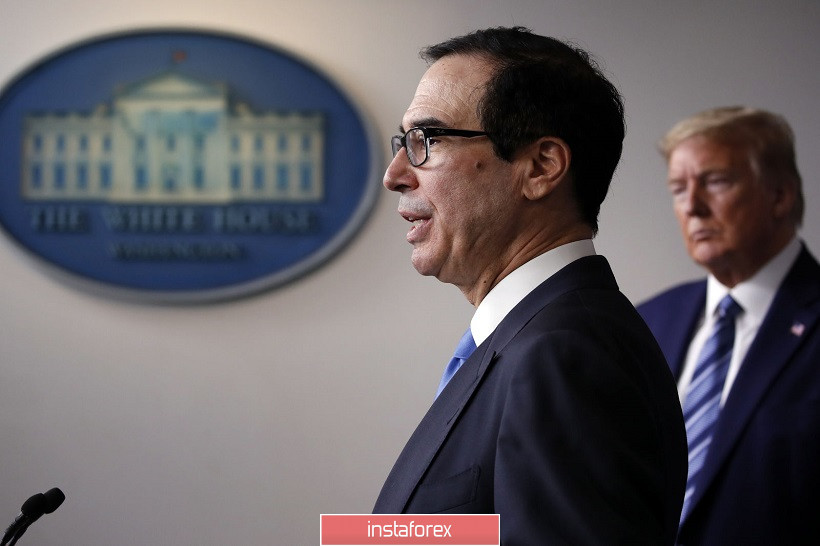The initial reaction of the market on the recent Fed decisions was clearly not in favor of the dollar. It dipped to 95.77, which is the lows last March, reflecting the weakening of the dollar throughout the market. The dollar began to lose its positions immediately after the publication of the accompanying statement, without waiting for the press conference of Fed Chairman Jerome Powell. However, Powell's speech did not add optimism to the market, so the USD index was kept under pressure until the end of the US session on Wednesday. On Thursday, the situation changed dramatically at the start of the Asian session, in which the dollar suspended its downward movement and returned to the area of the 96th figure through a correction. The trend is associated not only with the Fed decisions yesterday, but also with the comments of the US Treasury Secretary, who announced a new round of budget incentives.

With regards to the results of the June meeting, the Fed, as expected, left all the parameters of the monetary policy unchanged, thereby justifying market expectations. The Fed members said that they do not expect a rate hike until the end of 2022, making true the similar forecast that was discussed by experts on the eve of the Fed meeting. Analysts believe that the Fed will maintain this current level of internet rate "at least until the end of 2023". Negative rates were also put out of question, even hypothetically, as the long-term forecast for the interest rate was set at 2.5%.
As for the QE program, the Fed plans to increase purchases of treasury and mortgage securities "at least at the current pace", in order to maintain the level of lending to households and enterprises. Thus, this week, the Fed plans to buy back $ 20 billion in Treasuries and $ 22.5 billion in mortgage-backed securities. The regulator also does not rule out the possibility of conducting repos in large volumes, "if the economic situation so requires."
The Fed also set "red flags", or economic benchmarks, in which if reached, the Central Bank will consider the issue of raising the rate. According to the Fed, the coronavirus crisis created "serious medium-term risks for the economy," so the regulator intends to maintain the key rate at a level close to zero "until there are signs that the US economy has returned to the path of achieving employment and inflation goals. " Targets in this context remain to be at 2% inflation rate and a 5% unemployment rate. At the moment (according to the reports for April) inflation in the US (PCE Price Index) decided to 0.5% per annum, while the core index (excluding food and energy prices) in annual terms grew by only 1%. Unemployment in May settled to 13.3% (which is below the forecast of 19.5%). However, as Powell noted during the press conference, the unemployment rate in May could have been underestimated by about 3 percentage points. He said that the decline in US GDP in the second quarter could be a record.

The Fed also published a number of forecasts yesterday, the contents of which are expected to be revised in a negative direction. Thus, according to the estimates of Fed economists, the US GDP will shrink this year by 6.5%, and in 2021 will grow by 5%. Inflation will remain below the target level of 2% until the year 2023, so forecast for this year was reduced from 1.9% to 0.8%, and in 2021 from 2% to 1.6%. The Fed also lowered its inflation forecast for 2022 from 2% to 1.7%. Meanwhile, the unemployment forecast for this year was upped from 3.5% to 9.3%, and in 2021 from 3.6% to 6.5%. In 2022, unemployment will rise from 3.7% to 5.5%
The results of the June meeting clearly weakened the dollar. But the currency is now trying to regain lost ground since the Fed did not decide to control the bond yield curve, as well as lower the interest rates to negative levels.
In addition, Fed Chairman Jerome Powell made it clear that the bottom of the crisis has already been passed, pointing out the improving indicators observed in May this year. Powell also said that the US authorities will continue to provide incentives for businesses and enterprises, in order to overcome the crisis.
Coincidentally, US Secretary of Treasury Steven Mnuchin spoke about additional incentives yesterday, saying that the country "will definitely need" an additional bill to make new injections into the economy. Mnuchin said that the next round of budgetary incentives in the US will be "much more focused", and promised that the decision will come out next month.

The above statements are sure to help the dollar rise up to the border of the 97th figure. Thus, in the EUR/USD pair, the quotes are expected to experience a downward correction, which will push the quotes down to the first support level at 1.1250 (Tenkan-sen line on the daily chart). If the bears manage to pass the said level, the quotes will descend even further to the level of 1.1100, where the Kijun-sen line coincides with the middle line of the Bollinger Bands on the daily chart.
 English
English 
 Русский
Русский Bahasa Indonesia
Bahasa Indonesia Bahasa Malay
Bahasa Malay ไทย
ไทย Español
Español Deutsch
Deutsch Български
Български Français
Français Tiếng Việt
Tiếng Việt 中文
中文 বাংলা
বাংলা हिन्दी
हिन्दी Čeština
Čeština Українська
Українська Română
Română

